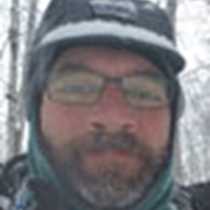Gerlache Straits & Neko Harbor
After leaving the Weddell Sea late last evening National Geographic Explorer set a course for the Northwestern side of the Antarctic Peninsula. This would take us through Antarctic Sound, Bransfield Strait and ultimately to the Gerlache Strait en route to Neko Harbor. Our passage proved to be more challenging than anticipated as a large low pressure system lying off the southwestern end of the peninsula sent 35 knot winds and swells funneled by the relatively narrow passage. By midnight, and through the early morning hours, it had seemed that we had somehow ended up in the fabled Drake Passage. Our ship readily handled the swells as did our hardy guests on board only slightly rattled by the need for a free hand while traversing the corridors. Sometimes the unexpected can provide the most interesting opportunities and breathtaking sights. The low angled morning light pierced underneath the layer of dark billowing clouds and set the boiling sea a stage for our intrepid companions, the seabirds. Deep blues, greens and brilliant spray provided an impressive backdrop for the dozens of Pintado Petrels (Daption capense), a handful of Southern Fulmars (Fulmarus glacialoides) and one lone Black-browed Albatross (Thalassarche melanophrys), no doubt blown off course by the gale. For the hardy sect of nature photographers and birders on board this was an opportunity that was not to be missed.
Gradually as we navigated to the lee side of the larger islands to the north and wound our way into Crocker and Pampa Pasages which not only provided some much needed reprieve from the seas but also a stirring scene of ice chocked mountains and sheer rock walls in all directions. By midafternoon we were situated at the far end of Anvord Bay. Our bow tucked neatly against the shore of a small cut called Neko Harbor. Truly the surroundings of this part of the peninsula are surreal at any perspective. The timeless grip of ice blanketing the landscape with all but the steepest and most foreboding slopes left unscarred by its slow grinding action. Given the opportunity to explore by Zodiac, kayak or tread up a snow covered slope among the only fit inhabitants of such a landscape, penguins that is, provided one with a real sense for the scale of this place. Or in simpler terms a perfect Antarctic Trifecta. With Gentoo Penguins (Pygoscelis papua) going about their all important matters of tending to their newly hatched chicks, coming and going from the beach and following well-ordered paths to their rocky homes. Our guests made their well-ordered way to visit with these incredible animals on way to the snowy ridgeline overlooking this glacial amphitheater. Others chose to experience this place from a much lower and entirely different perspective of a kayak. Perfectly designed to glide amongst the scores of icebergs and indeed see the Gentoo’s in their real environment as they porpoise through the water en route to the feeding grounds or returning with a belly full of krill to feed the chicks eagerly waiting at the nest site. Lastly a chance was provided to cover a bit more ‘ground’ and set out in a Zodiac to see just what waits behind that next massive tabular iceberg. Perhaps an Antarctic or Brown Skua (Catharacta lonnbergi) atop a flow, or a resting Crabeater Seal (Lobodon carinophaga) lounging away the day between meals of krill, that all-important link in this simple but vibrant web. But surely one highlight of the day was the chance to wonder at a simply massive and intricately sculpted tabular iceberg. Perhaps the massive caverns and fissures that marked one side were carved by repeated tumultuous seas like we experienced only hours before, but as we gazed upon it from the safety of our Zodiacs only imagination and personal appreciation could tell the story.
As more than a side note the three NOAA Cetacean researchers we have on board with us on this expedition, including Lindblad’s own Stephanie Martin, set out to find Antarctic Minke Whales (Balaenoptera bonaerensis) to get a biopsy sample for analysis on several research projects. Their efforts were successful with one whale sampled through the aid of a specially modified crossbow bolt that takes a 40mm skin sample and is retrieved. Even now as the ship is situated in Paradise Bay enjoying even more of this spectacular landscape our Cetacean team is off after another Minke Whale. This time in hopes to place a transmitting tracking tag on the animal to learn more about these little understood animals. Truly for all on board this day offered much that Antarctica has to offer and left all wanting more.




